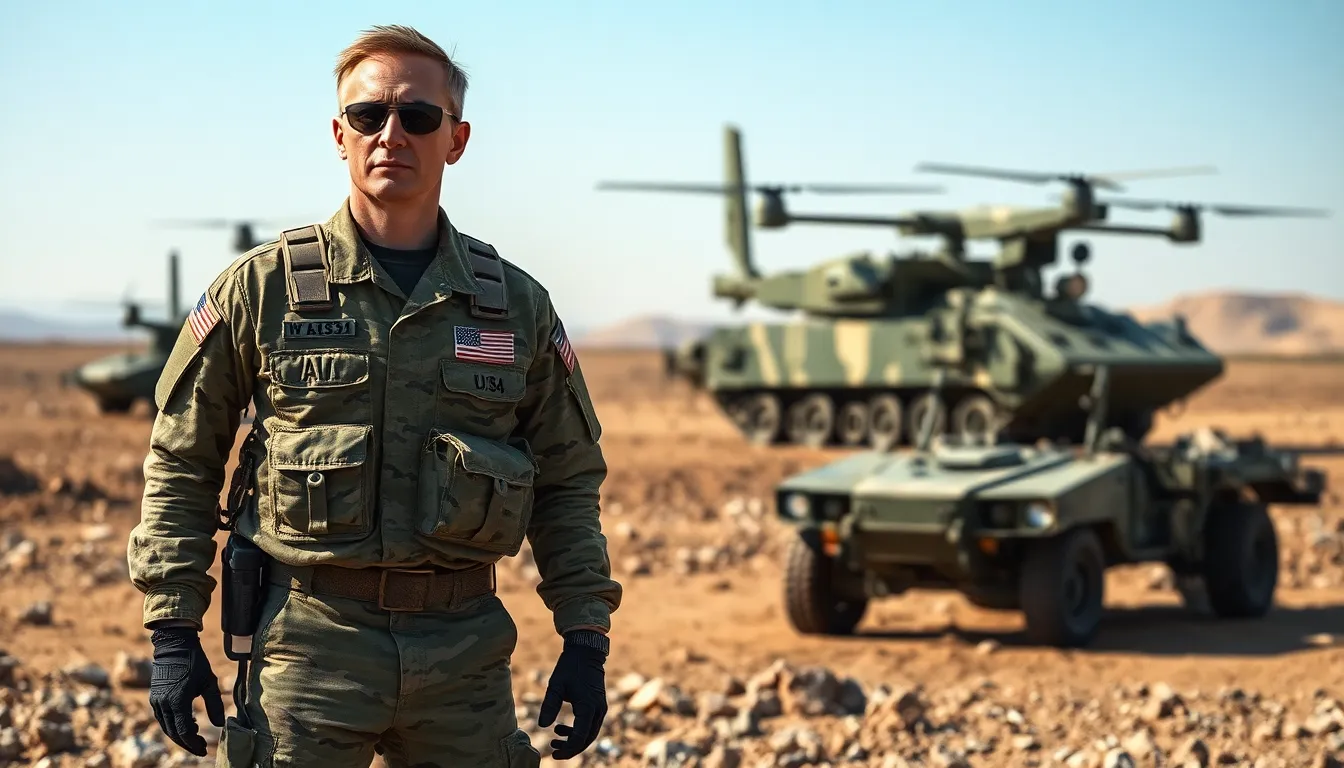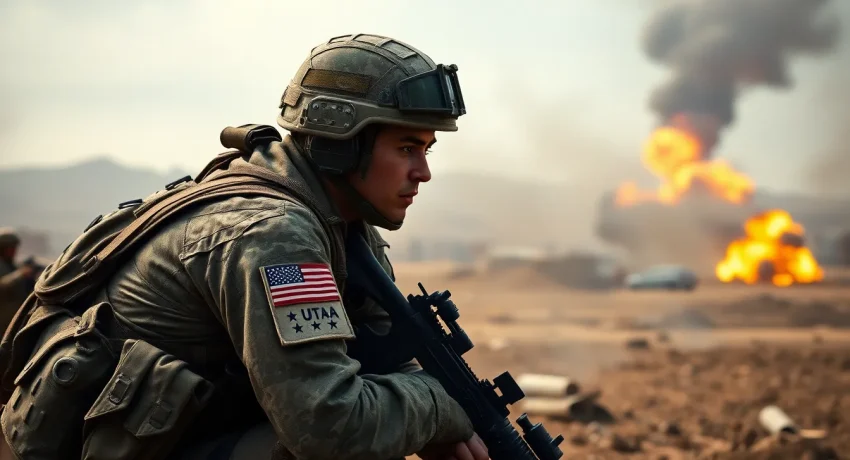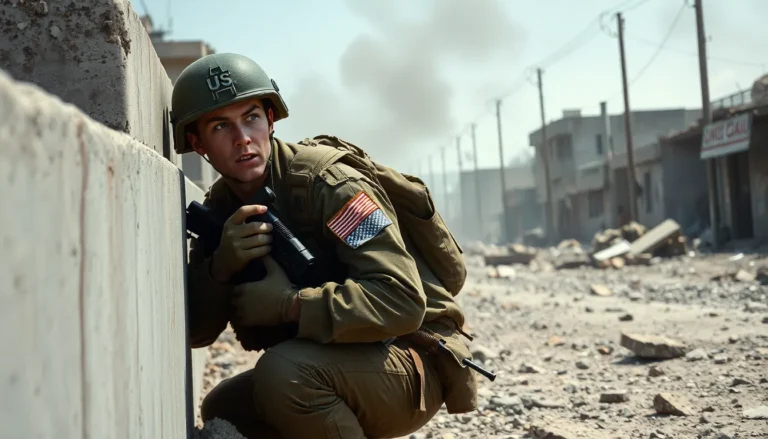In the high-stakes world of warfare, battlefield performance isn’t just a buzzword; it’s the difference between victory and defeat. Imagine soldiers moving like synchronized dancers while dodging bullets—now that’s a show worth watching! Understanding what makes a soldier excel under pressure can turn the tide of battle and maybe even save a few lives along the way.
Table of Contents
ToggleUnderstanding Battlefield Performance
Battlefield performance significantly influences the success of military operations. Assessing this skill set enables a deeper understanding of how soldiers execute tasks under challenging conditions.
Definition and Importance
Battlefield performance refers to the effectiveness and efficiency with which soldiers carry out their duties in combat. This concept encompasses a range of abilities, including decision-making, physical endurance, and teamwork. Each ability plays a crucial role in determining how well a unit adapts to dynamic situations. Understanding battlefield performance can lead to improved training programs and strategies, directly impacting mission success. Enhanced performance reduces casualties and increases the probability of achieving tactical goals.
Key Metrics to Measure Performance
Several metrics exist to evaluate battlefield performance. These metrics include reaction time, accuracy of fire, and communication efficiency. Reaction time measures how quickly a soldier responds to threats. Accuracy of fire assesses the precision of shots fired in various conditions. Communication efficiency evaluates the effectiveness of information exchange among team members. Collectively, these indicators provide insight into a unit’s operational capability. Tracking these metrics assists military leaders in identifying strengths and weaknesses, fostering continuous improvement on the battlefield.
Factors Influencing Battlefield Performance

Multiple factors influence battlefield performance, shaping the effectiveness of military operations and enhancing the outcomes of engagements.
Leadership and Decision-Making
Leadership directly impacts battlefield performance. Effective leaders make quick, informed decisions that guide troops under pressure. Commanders with strong leadership qualities foster trust and morale within their units, leading to improved collaboration. Decision-making skills determine how swiftly and accurately teams adapt to changing combat scenarios. High-stakes situations require leaders to assess risks and benefits rapidly. The ability to communicate strategies effectively ensures all team members understand their roles, enhancing overall performance in combat conditions.
Technology and Equipment
Advancements in technology boost battlefield performance significantly. State-of-the-art equipment enhances soldiers’ capabilities, improving their situational awareness and response times. Tools like drones and GPS systems provide critical data, allowing for informed decision-making in real time. Sophisticated weaponry increases accuracy and efficiency, reducing the chances of collateral damage. Moreover, reliable communication systems enable seamless interactions among units, facilitating coordinated efforts. The integration of technology continuously transforms military operations, making them more effective on the modern battlefield.
Strategies for Enhancing Battlefield Performance
Improving battlefield performance requires a multifaceted approach. Focus on specific strategies can elevate operational effectiveness.
Training and Preparation
Effective training significantly enhances battlefield performance. Simulated scenarios immerse soldiers in challenging environments, promoting decision-making under pressure. Incorporating varied combat situations builds adaptability, preparing troops for real-world unpredictability. Regular physical conditioning ensures soldiers maintain high levels of endurance, enabling sustained performance during extended engagements. Utilizing advanced technologies in training, like virtual reality, sharpens critical skills while tracking progress. By prioritizing both tactical and technical training, military units position themselves for success on the battlefield.
Team Dynamics and Cohesion
Cohesion among team members fosters enhanced battlefield performance. Trust between soldiers leads to improved communication, enabling swift responses during critical moments. Team-building exercises cultivate relationships, which are pivotal for performance under stress. Integrating diverse skill sets within units allows for a more comprehensive approach to problem-solving. Shared objectives unite teams, aligning efforts toward common goals. Regular feedback sessions further strengthen cohesion, reinforcing commitment to team success. Prioritizing team dynamics results in increased efficiency and effectiveness in combat situations.
Case Studies of Battlefield Performance
Several case studies highlight the impact of battlefield performance on military outcomes. Analyzing these instances provides insights into the complexities of combat situations.
Historical Examples
The Battle of Gettysburg illustrates the importance of effective leadership and strategic decision-making. In July 1863, Union General George Meade’s quick decisions and communication improved troop positioning, leading to a significant victory against Confederate forces. Another example, the Battle of Britain in 1940, showcased how the Royal Air Force’s swift reaction times and coordination successfully repelled the German Luftwaffe, ultimately altering the course of World War II. These historical events demonstrate the lasting effects of battlefield performance on military success.
Modern Military Operations
Contemporary military operations emphasize advanced technology and data-driven strategies to enhance battlefield performance. During Operation Desert Storm in 1991, the U.S. military utilized precision-guided munitions and real-time intelligence, resulting in faster decision-making and reduced civilian casualties. The recent use of drones in conflict zones like Afghanistan enables troops to gather intelligence and conduct strikes with pinpoint accuracy, showcasing a blend of innovation and adaptability. These modern examples illustrate how performance metrics evolve with technology, significantly influencing operational outcomes.
Future Trends in Battlefield Performance
Emerging trends continue to shape battlefield performance, focusing on innovations and technological advancements that enhance military effectiveness.
Innovations in Warfare
New technologies transform warfare strategies. Robotics automate many tasks, allowing soldiers to focus on critical decision-making. Advanced weaponry increases precision, minimizing collateral damage. Virtual reality training environments prepare troops for real-world scenarios by creating realistic combat conditions. Additionally, improvements in materials science enhance the durability and functionality of equipment, ensuring soldiers have the best tools available. Enhanced logistics and supply chain management also streamline operations, making resources more accessible during missions. Such innovations directly influence how units operate in combat, ultimately enhancing overall performance on the battlefield.
The Role of Artificial Intelligence
Artificial intelligence plays a pivotal role in modern warfare. AI systems analyze vast amounts of data swiftly, providing actionable intelligence for decision-makers. Real-time threat assessment capabilities allow commanders to adapt strategies quickly, improving situational awareness. Predictive analytics help anticipate enemy movements, giving troops a tactical advantage. Moreover, AI-driven communication systems facilitate seamless interaction among units, ensuring cohesive action during missions. By integrating AI into training programs, military personnel develop critical thinking skills that enhance battlefield performance. As AI technologies continue to evolve, their impact on military effectiveness will significantly shape future combat scenarios.
Battlefield performance remains a cornerstone of military success. The interplay of strategy technology and human capability shapes outcomes in conflicts. By prioritizing training and fostering strong team dynamics military leaders can significantly enhance their units’ effectiveness.
As innovations continue to emerge the future of battlefield performance looks promising. Embracing advanced technologies and integrating them into training will prepare soldiers for the complexities of modern warfare. The lessons learned from historical battles and contemporary operations underscore the crucial role performance metrics play in achieving tactical objectives.
Ultimately investing in battlefield performance not only saves lives but also ensures that military operations adapt and thrive in an ever-changing landscape.




